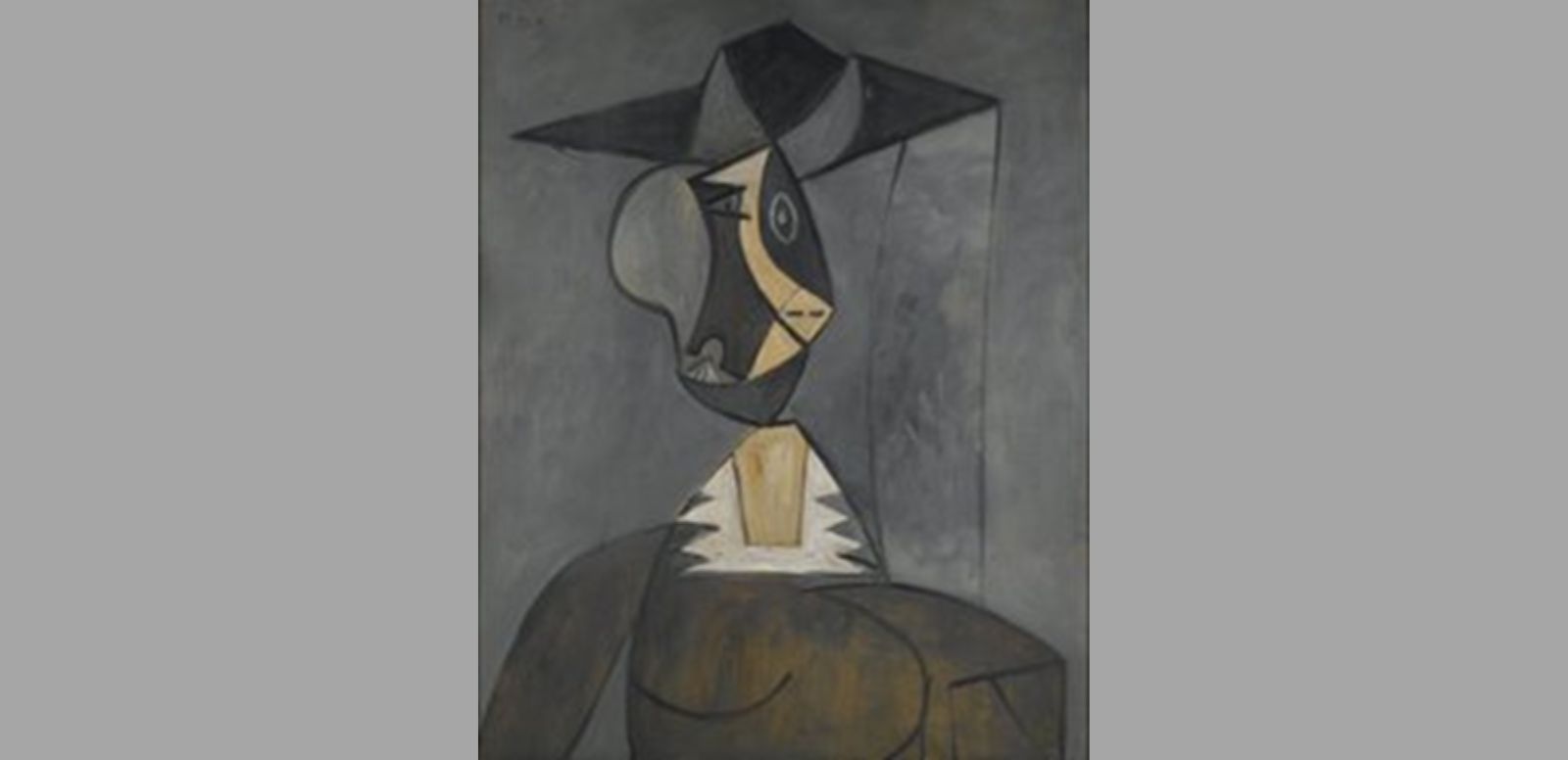
Brooklyn Museum
© Sucesión Pablo Picasso, VEGAP, Madrid, 2023
Pablo Picasso stood out for his ability to express his emotions through painting and, in particular, the horror of war had a profound influence on his art. This is demonstrated in two of his works: Guernica (1937), an expression of his anguish during the Spanish Civil War, and Woman in Gray (1942), a piece that deals with the German occupation of Paris in World War II.
Since Paris was occupied by the Germans, Picasso could not make works openly critical of the war. For that reason, he tried to camouflage his feelings and reflections on the impact of such an event on humanity, without actually painting it.
A palette of somber colors and a distorted visual representation are techniques that the Malaga-born artist used to capture his feelings in Woman in Gray (1942). Through cubism, the artist breaks with the conventional representation of the human figure and uses geometric shapes and multiple perspectives.

Construcción mixta sobre madera, 157.5 x 68.6 cm.
Brooklyn Museum
© Dindga McCannon
Woman in Gray (1942) is currently on view at the Brooklyn Museum in an exhibition entitled It's Pablo-matic: Picasso according to Hannah Gadsby. An exhibition of over 100 works that offers a critical and provocative view of Picasso's legacy confronted by contemporary artists with a feminist perspective work. Picasso's work is placed alongside pieces by artists such as Dindga McCannon, who painted Revolutionary Sister (1971).
Both pieces, Picasso's Woman in Gray (1942) and McCannon's Revolutionary Sister (1971), are works that address social and political issues in specific historical contexts. In both cases, women are depicted and powerful messages are conveyed through visual symbolism.
The pieces capture the emotional state of the artists and the sociopolitical messages of their respective eras. Picasso's Woman in Gray (1942) was painted during World War II and reflects the artist's anguish in the midst of the conflict, while McCannon's Revolutionary Sister (1971) focuses on the empowerment of African American women during the 1960s and 1970s.

